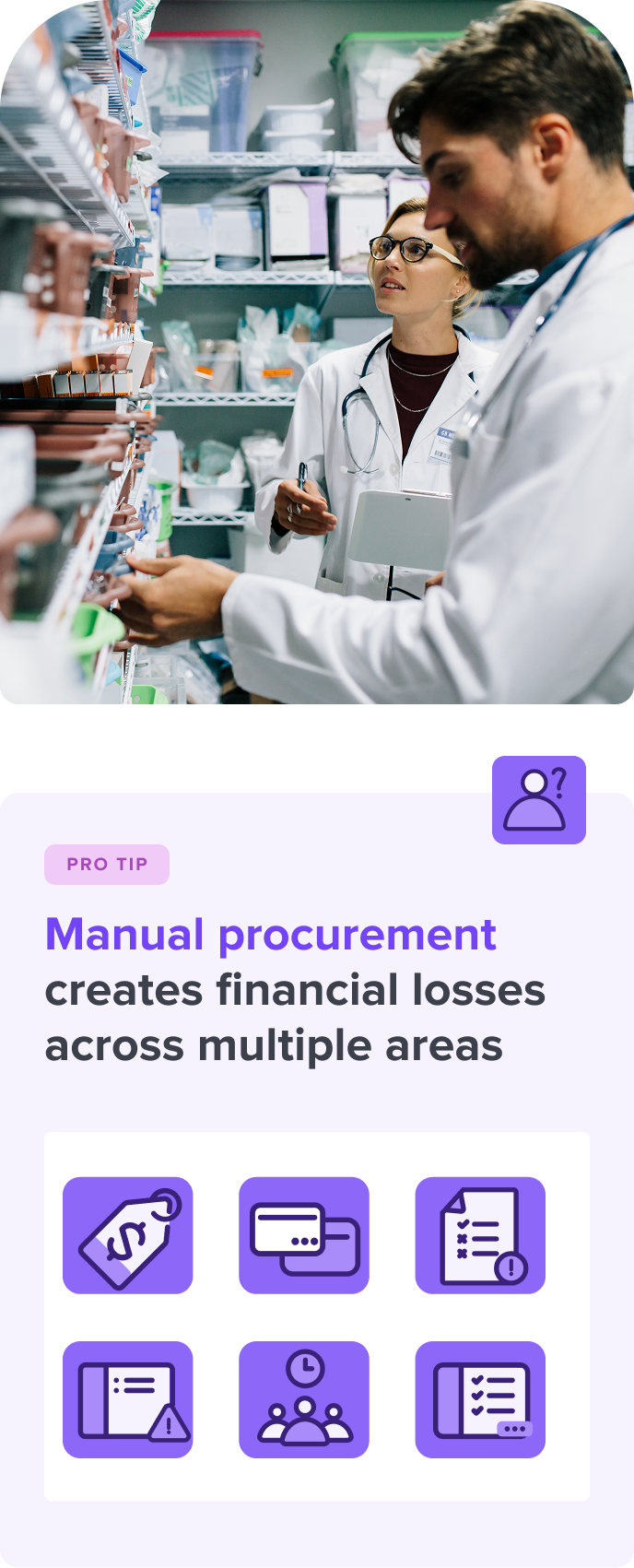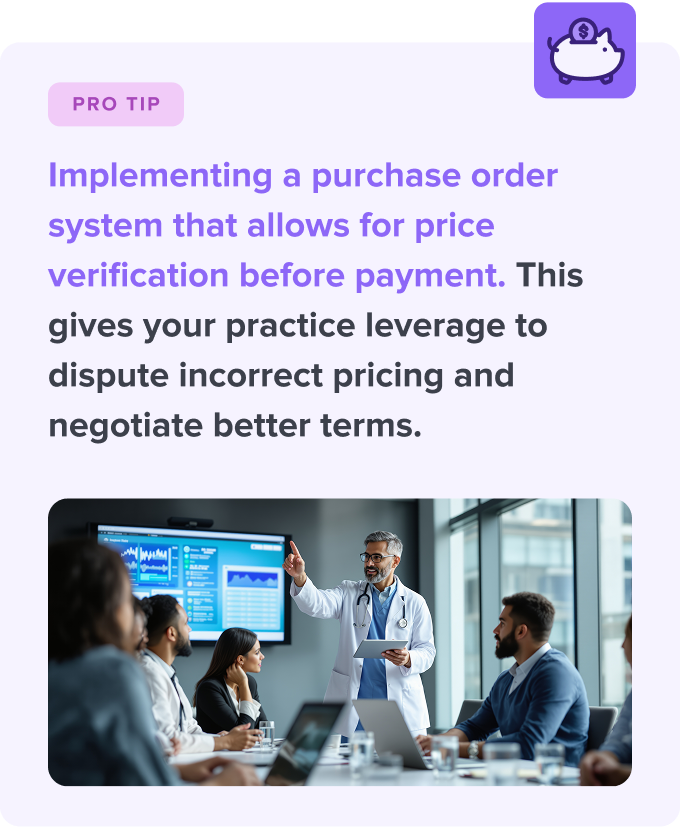Every dental practice owner knows the sting of rising supply costs.
But these changes don’t happen overnight. Price creep is often due to gradual, often imperceptible rise in procurement costs.
While the individual price increases may be tiny, they can drain tens of thousands of dollars from your practice annually (and most practices don't even notice it happening). Industry data shows that practices commonly experience 10-20% cost increases through price creep alone, separate from market-driven price changes.

The challenge is particularly acute for growing practices and DSOs, where manual procurement processes make it nearly impossible to track these incremental changes across multiple locations and suppliers. Without systematic oversight, these hidden costs compound rapidly, directly impacting your bottom line.
In this article, we’ll examine how manual procurement creates hidden costs across your practice operations and, more importantly, outlines the concrete steps needed to regain control of your supply spending.
Price creep is the gradual, often unnoticed increase in supply costs over time. One supplier might increase an item's cost by 50 cents one month, then another dollar the next.
These are small changes, small enough to fly under the radar. But when you multiply those changes across hundreds of SKUs? Those changes add up and this problem compounds with multiple locations. Without centralized procurement, each practice location might pay different prices for identical items.

Price creep has a particularly insidious effect on dental practices using manual procurement processes. For instance, when practices rely on individual supplier websites or credit card purchasing, they lose the ability to track price changes across the board.
Manual systems also mask pricing inconsistencies between negotiated rates and actual charges. Even when practices secure favorable contract pricing, individual location logins may not reflect these negotiated rates. Without automated verification, practices often overpay simply because they lack visibility into what they should be paying versus what they're being charged.
Credit card purchasing further obscures these issues by eliminating the opportunity to review prices before payment. When practices automatically pay invoices via stored credit cards, they surrender the leverage to dispute incorrect pricing or negotiate better terms.
By the time you notice the price increase, you've already paid for it and getting that money back is nearly impossible.
Manual procurement creates financial losses across multiple areas:

Tracking price increases is crucial, but manual procurement creates deeper operational costs that can significantly impact a practice's profitability.
The most immediate effect is on staff productivity.
We’re talking about the dental assistants and office managers who spend hours managing supplies instead of focusing on patient care and practice growth. Unfortunately, when procurement is your dental assistant's eighth job in the practice, something has to give.

Perhaps most significantly, manual procurement creates a cycle of reactive purchasing that prevents practices from building strong supplier relationships or negotiating better contracts. Practices can lose revenue through these operational inefficiencies alone, separate from direct price creep impacts.
If this represents even 3-5%, it could mean tens of thousands of dollars annually for an average practice, money that could be reinvested in growth, technology, or improved patient care.
If you're not sure whether or not you’re overspending on supplies, there are a few places to look within the practice.
First, if your practice relies primarily on credit card purchasing and lacks a formal purchase order system, you're likely missing opportunities to verify pricing and leverage better payment terms.
One of the biggest issues is that some practices don't have any inventory controls in place at all. You need to know what you have so you can actually make an informed decision about what to order.
Another red flag is the inability to easily compare supplier pricing or track price changes over time. Without centralized procurement data, practices often miss gradual price increases until they've already significantly impacted profitability. Additionally, if your practice lacks formal approval processes for purchases, you're exposed to both inefficient spending and potential security risks.
Taking control of procurement costs starts with establishing baseline data about your current spending patterns. This means implementing a system to track what you're buying, from whom, and at what price.

The next crucial step is implementing a purchase order system that allows for price verification before payment. This gives your practice leverage to dispute incorrect pricing and negotiate better terms. Regular price audits should become part of your standard operating procedure, allowing you to catch price creep before it significantly impacts your bottom line.
Consider consolidating suppliers to optimize your buying power while maintaining enough vendor relationships to ensure competitive pricing. We recommend working with 2-4 suppliers. That is enough to maintain competitive pricing but not so many that it creates administrative burden.
As you’ve seen, price creep's impact on dental practices extends far beyond simple cost increases. Fortunately, this issue isn't inevitable.
Modern e-procurement platforms like Method provide the systematic oversight needed to catch and prevent these hidden costs. By centralizing your procurement data, implementing automated price verification, and establishing proper inventory controls, you can transform procurement from a source of financial drain into a strategic advantage for your practice.
Ready to stop losing money to price creep? Schedule a demo with Method today to see how our platform can help you regain control of your supply costs and protect your practice's profitability.









